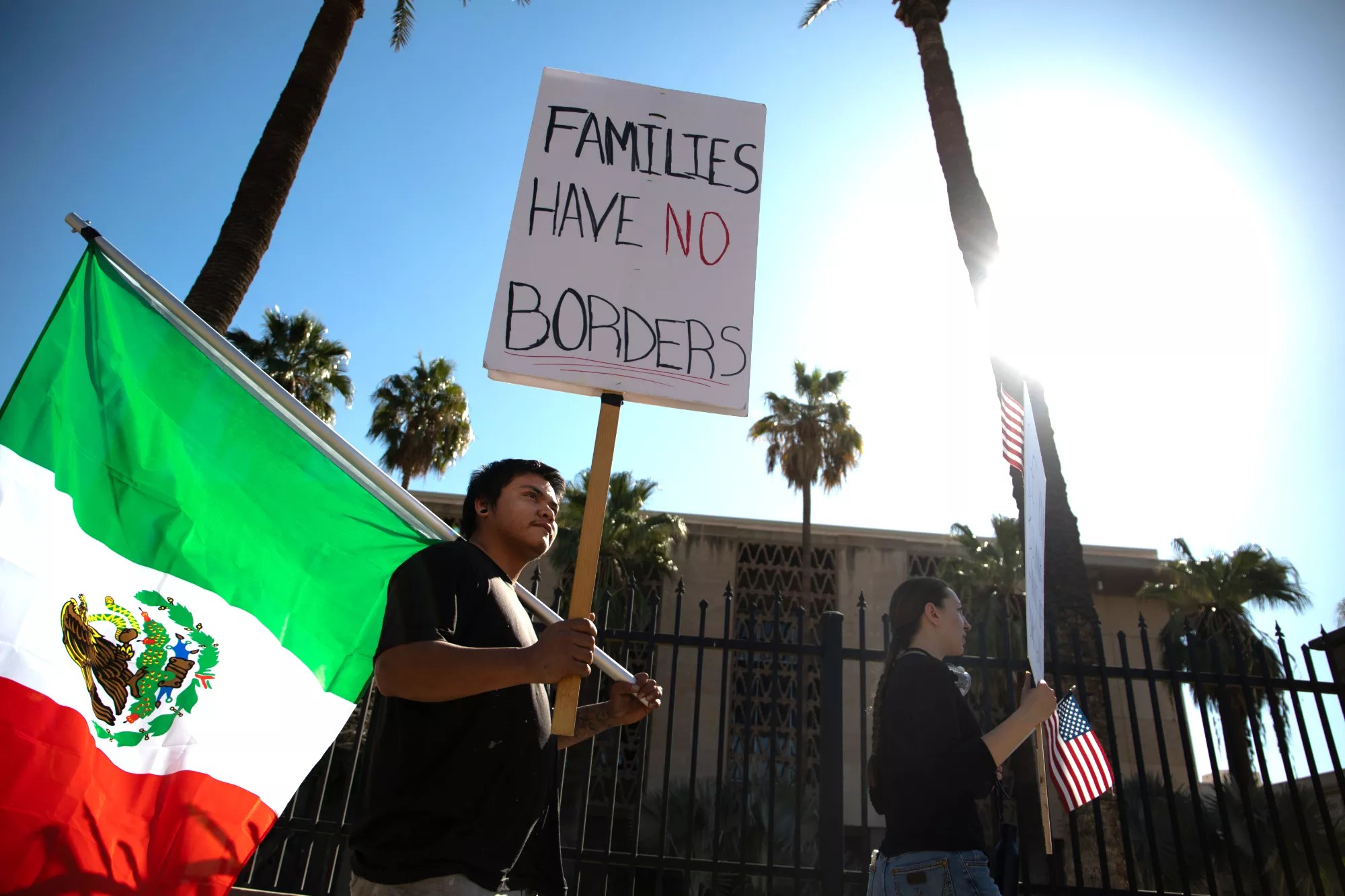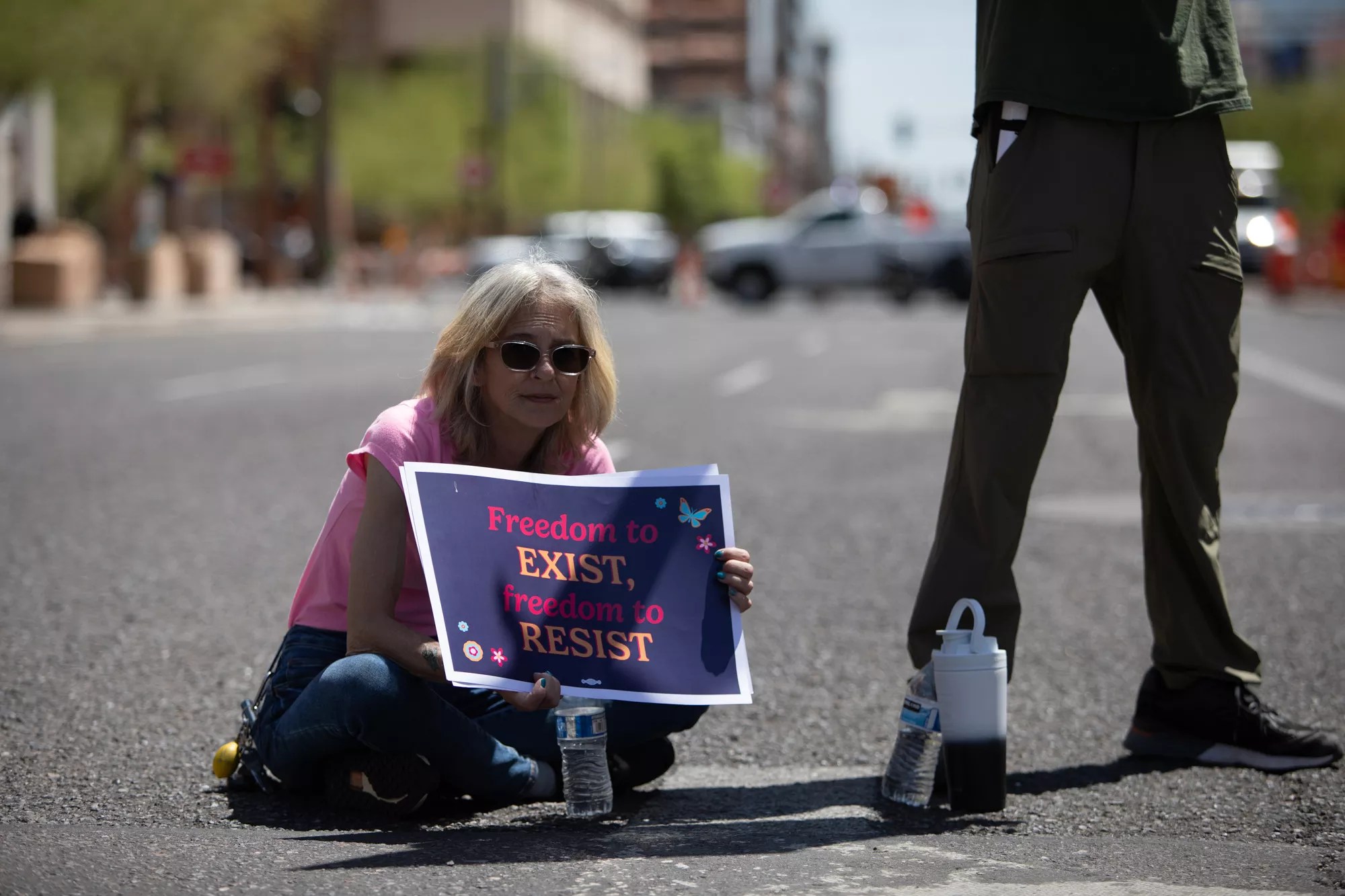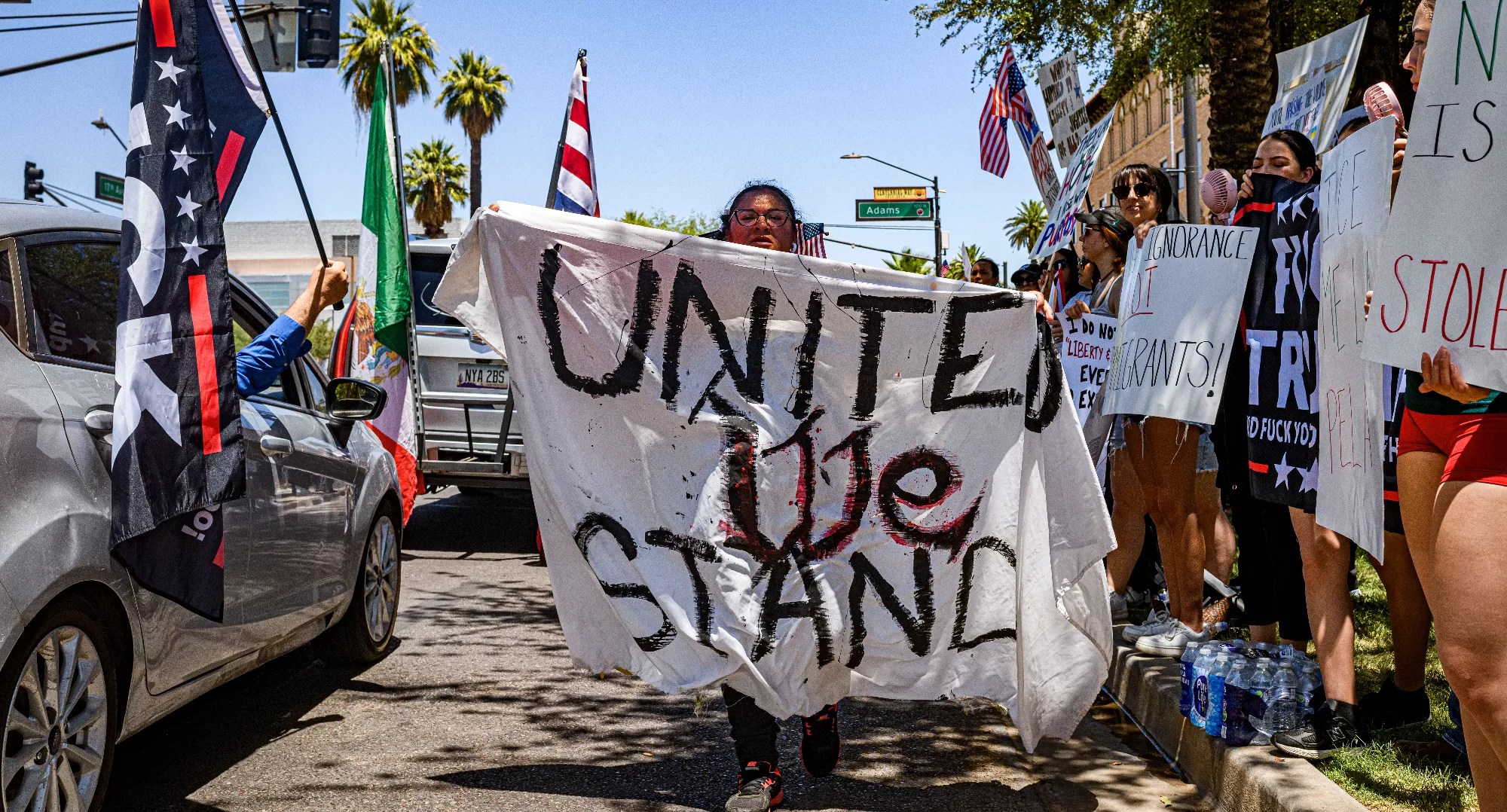
Grace Monos

Audio By Carbonatix
After a relatively mild start, Phoenix’s summer is now in full swing. Temperatures sit comfortably above 100 degrees every day, and they might not come down for good until October.
Arizonans know how to deal with this. We stay inside, crank up the air conditioning and make only brief appearances in the heat, either to walk the dog at dawn or dusk or make a quick dash to the car.
But on Saturday, thousands of Arizonans braved the heat to attend anti-Trump “No Kings” protests across the Valley. The protests started in the cooler hours of the morning, but the temperature was well above 100 degrees by noon and thousands of people were still protesting at the Arizona Capitol in downtown Phoenix.
The temperature won’t cool down for months, and the heat may not blunt the anti-Trump fervor. Protesting in the summer carries an obvious health risk, but not opposing Trump’s immigration crackdown and power grab offers its own dangers.
Phoenix, make your New Year’s Resolution Count!
We’re $13,000 away from our End-of-Year campaign goal, with just a couple of days left! We’re ready to deliver — but we need the resources to do it right. If New Times matters to you, please contribute today to help us expand our current events coverage when it’s needed most.
“If we don’t do something now,” said Desert Democracy Indivisible organizer Sam Cooley. “We’re not gonna have an option for later.”
If you’re going to be taking to the streets in Arizona this summer, here’s how to do it safely.

Bringing multiple water bottles to a summer protest is a must.
Grace Monos
What you should bring to protest in the Arizona heat
The basics of staying safe in the heat are simple. As longtime Tempe-based activist Victor Aronow put it: “You go out, you wear a hat, you wear your sunscreen and you go out and you march.” And, he said, “You try to get out early.”
Here’s what you should bring:
- A hat. A baseball cap might be your thing, but a cowboy hat or sun hat might provide more shade.
- Sunscreen. Severe sunburns are no joke. Neither is skin cancer.
- Water. Lots of it – multiple water bottles. Your body is going to lose water through sweat, and if you don’t replenish it, you’re in trouble.
- Sunglasses. It’s bright out here! Protect your eyes.
- Snacks, to fight low blood pressure and keep you going.
- Lightweight clothing. This is not the time for a wool sweater.
- Also recommended: additional shade, like an umbrella; a fan, battery-powered or otherwise; and cooling towels, to place on your neck or under your hat.

Protest organizers are planning events for the cooler hours of the morning and bringing lots of water (bottom right) to ensure everyone stays safe.
Kevin Hurley
How organizers are preparing to safely protest in the summer
Activists and organizers are also preparing for safe protests in the heat, making strategic decisions to continue to ensure high turnout while “prioritizing everyone’s health and safety first,” said Janae Stevenson, an organizer at Care in Action.
“Arizona is one of the hottest places in the country, if not the hottest,” Stevenson said. “Arizona heat is something that is on all of our minds.”
Organizers and volunteers fill cars with cold water bottles to hand out to protesters throughout the day. Medical teams – made up of doctors, nurses, emergency medical technicians and volunteers – are present to help anyone combating heat-related issues, such as heat stroke or dehydration. Security organizers in yellow vests also walk protest routes to hand out water and check to see if people need assistance.
“As we continue toward the summer months, there will be more shading, more cooling,” Stevenson said at a May protest. “We’ve got lots of water. We’ve got water on wheels. We’ve got security with water.”
Protests will also start earlier to avoid the brutality of the midday heat. Cooley heard from a lot of her neighbors that they’d “‘love to go to a protest, but we can’t’ because they don’t want to go to the Capitol in the heat.” In response, she organized two smaller “No Kings” protests on June 14 in her North Encanto neighborhood in the relatively cooler hours of 8-10 a.m.
“We’re just gonna see more of these early morning protests,” Cooley said.
There are months of 100-plus-degree days to come, so if you’re getting out there to protest, be sure to load up with the right supplies and find the right protest – at the right time – for you.